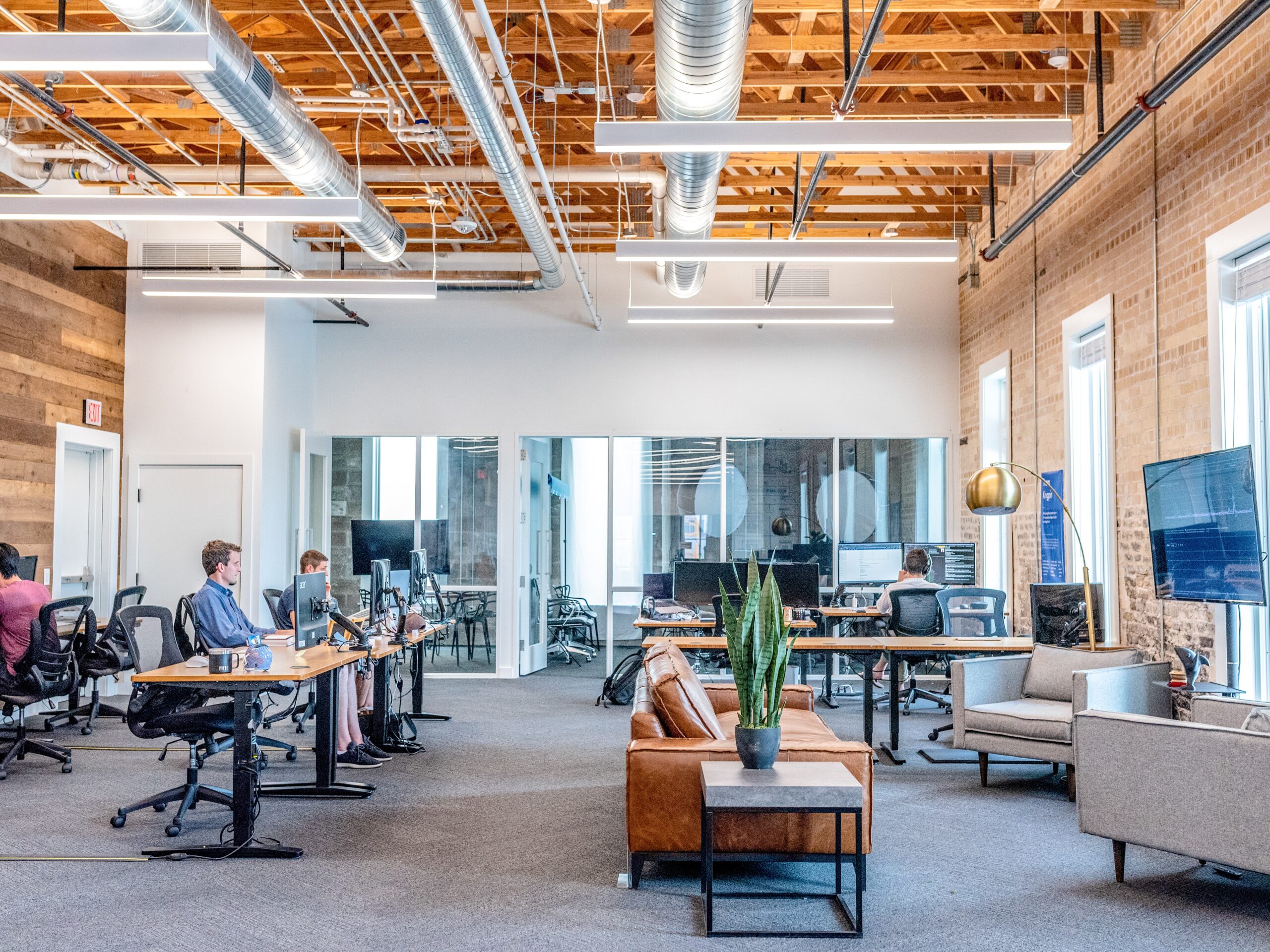The commercial sector has many entities, and a few of these include retail, hospitality, and other office venues. Amidst these different industries, the role of a commercial interior designer becomes complex and diverse.
Designing for these diverse sectors necessitates not only a keen aesthetic sense but also a strategic approach that considers the unique demands and objectives of each domain. From shaping alluring retail spaces to creating immersive hospitality environments and fostering productive office atmospheres, designers have the opportunity to weave their expertise into the fabric of businesses.
Commercial designers play a pivotal role in shaping the physical environments of retail, hospitality, and office spaces. Their expertise extends far beyond simply arranging furniture or selecting color palettes; they have the power to transform spaces into immersive experiences that align with a brand’s identity and cater to the needs of its intended audience. Here’s a detailed look at what a commercial interior designer can do within these diverse industries:
The Strategic Role of a Commercial Interior Designer
Interior designers in the commercial sector play a critical and strategic role in shaping the physical spaces that define the retail, hospitality, and office sectors. Beyond the surface aesthetics, they wield their expertise to craft environments that harmoniously merge functionality, brand identity, and human experience. This article delves into the dynamic and strategic role that these designers assume, exploring how their insights navigate the complexities of diverse industries, resulting in captivating and purpose-driven spaces.
- Retail Spaces:
In the retail sector a commercial designer can help with the following-
- Store Layout and Flow:
Designers analyze customer behavior and strategically plan the layout to optimize traffic flow. They create pathways that lead customers through enticing displays, maximizing exposure to products and encouraging purchases. Moreover, they consider the psychology of consumer behavior, placing high-demand items strategically and encouraging impulse buys near checkout counters.
- Visual Merchandising:
Designers curate displays that not only showcase products but also tell a compelling story. They use their creative prowess to arrange merchandise in visually appealing ways that capture attention and reflect the brand’s ethos. This may involve incorporating thematic elements, creating focal points, and using lighting to highlight certain products.
Branding Integration:
A commercial interior designer ensures that the store’s interior aligns seamlessly with the brand’s identity. From the choice of materials to the overall ambiance, every element reflects the brand’s values, creating a consistent and memorable customer experience. They might integrate the brand’s color palette, logo, and even signature scents to reinforce brand recognition and customer loyalty.
- 2. Hospitality Venues:
A commercial designer focuses on the following elements:
- Guest Experience:
Designers focus on creating an ambiance that resonates with the intended guest experience. Whether it’s a serene atmosphere for a luxury spa or a vibrant energy for a trendy restaurant, they bring the desired emotions to life through design. They meticulously select furnishings, textures, and lighting that evoke the desired emotions in guests, ensuring a memorable stay.
- Functional Comfort:
Hospitality designers consider the functionality of spaces without compromising on aesthetics. They ensure that guest rooms are comfortable and well-equipped, public areas are welcoming, and circulation is intuitive. They also pay attention to acoustics, ensuring that spaces are both visually appealing and acoustically comfortable.
- Cultural Context:
When designing for hotels, resorts, or restaurants, designers often incorporate elements that reflect the local culture or the venue’s unique selling points. This adds authenticity and helps guests feel a deeper connection to the space. This might involve integrating local artwork, traditional design elements, or indigenous materials.
- Office Spaces:
- Workplace Productivity:
Commercial interior designers create office layouts that foster productivity and collaboration. They consider the needs of different departments and individuals, optimizing the arrangement of workstations, meeting rooms, and breakout areas. Additionally, they incorporate quiet zones for focused work and communal spaces for team interaction, fostering a balanced work environment.
- Wellness and Comfort:
Designers are increasingly focusing on creating workspaces that prioritize employee well-being. They incorporate elements like ergonomic furniture, natural light, and greenery to promote physical and mental health. This might include standing desks, comfortable seating, and indoor plants that improve air quality.
- Branding and Company Culture:
The design of office spaces can communicate a company’s values and culture. Designers integrate the brand’s visual identity and core beliefs into the design, making the office a reflection of the organization’s ethos. This could involve incorporating branded artwork, mission statements, and company colors throughout the space.
In all these industries, commercial interior designers leverage their skills in:
- Space Planning:
They create floor plans that optimize available space, ensuring a harmonious balance between functionality, aesthetics, and circulation. This might involve utilizing modular furniture to allow for easy reconfiguration in response to changing needs.
- Material Selection:
Designers choose materials that are not only visually appealing but also durable and suitable for the specific environment. For instance, they might opt for high-traffic flooring in retail spaces or sound-absorbing materials in offices to enhance comfort and acoustics.
- Color Psychology:
Designers use colors strategically to evoke emotions and set the desired mood within a space. Different colors can influence customer behavior, employee motivation, and guest experiences. For instance, calming blues might be used in hospitality spaces to induce relaxation.
- Lighting Design:
Proper lighting can enhance the overall ambiance and highlight key areas. Designers select lighting fixtures that complement the design while also serving functional needs. They might use warm lighting in hospitality areas for a cozy feel and bright, task-focused lighting in office workstations.
- Budget Management:
Commercial interior designers work within budget constraints to achieve the desired results. They source materials and furnishings that align with the project’s financial scope, looking for cost-effective alternatives without compromising on quality or aesthetics.
In conclusion,
A Commercial interior designer holds the keys to creating immersive experiences within retail, hospitality, and office spaces. Their strategic insights not only shape the physical environment but also influence the emotional connections users develop with these spaces. By skillfully balancing functionality, aesthetics, and brand identity, these designers craft environments that leave lasting impressions and elevate the overall human experience.
In essence, a commercial interior designer is a versatile professional who combines artistic creativity with a deep understanding of human psychology, brand identity, and spatial functionality. They are the architects of experiences, crafting spaces that resonate with the essence of the industry they are designing for, whether it’s retail, hospitality, or office spaces.



